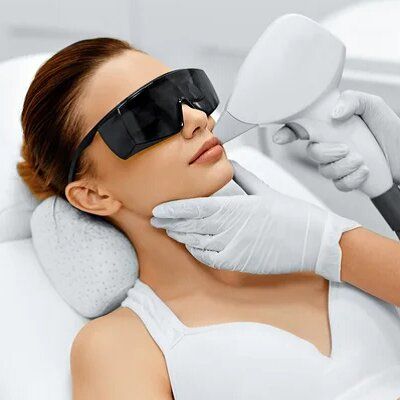Laser hair removal has become a popular choice for long-lasting hair reduction, offering a more permanent solution compared to traditional methods like shaving or waxing. As in many other places, the procedure of Laser Hair Removal in Oman is gaining traction for its efficiency and convenience. However, one common side effect that many experience post-treatment is redness. This redness can be uncomfortable and concerning, but understanding how to manage it effectively can make a significant difference in your recovery and overall experience.

Understanding Redness After Laser Hair Removal
What Causes Redness?
Redness following laser hair removal is a normal response of the skin to the treatment. The laser works by emitting pulses of light that are absorbed by the pigment in the hair follicles. This process damages the follicles, leading to hair loss. However, the surrounding skin can become irritated and inflamed, resulting in temporary redness. This reaction is usually short-lived and part of the healing process.
Typical Duration and Intensity of Redness
In most cases, the redness will appear immediately after the procedure and may last from a few hours to a couple of days. The intensity can vary depending on factors such as skin type, the area treated, and the settings used on the laser device. For individuals in Oman or elsewhere, understanding these aspects can help manage expectations and prepare for appropriate aftercare.
Effective Strategies to Minimize Redness
Immediate Aftercare Tips
- Cool Compresses: Applying a cool compress to the treated area can help soothe the skin and reduce redness. Use a clean cloth soaked in cool water and gently press it against the skin for 10-15 minutes at a time.
- Hydrating Gels: Aloe vera gel is a natural remedy known for its soothing properties. Applying it to the treated area can help alleviate redness and provide relief from irritation.
- Avoiding Heat: In the hours following the treatment, avoid hot showers, saunas, and strenuous exercise that can increase blood flow to the skin and exacerbate redness.
Over-the-Counter Remedies
- Hydrocortisone Cream: A mild hydrocortisone cream can help reduce inflammation and redness. Apply a thin layer to the affected area as directed by the product instructions.
- Anti-Redness Serums: Look for serums containing ingredients like niacinamide or green tea extract, which can help calm redness and promote healing.
Long-Term Care Strategies
- Sun Protection: After laser hair removal, the skin can be more sensitive to UV rays. Apply a broad-spectrum sunscreen with at least SPF 30 daily to protect the treated area and prevent further irritation.
- Moisturization: Keeping the skin well-moisturized can help reduce dryness and redness. Use a gentle, fragrance-free moisturizer to maintain skin hydration.
- Avoiding Irritants: Steer clear of harsh skincare products and ingredients that can irritate the skin, such as retinoids or exfoliants, until redness subsides.
What to Avoid to Prevent Worsening Redness
Common Mistakes to Avoid
- Avoid Scratching or Rubbing: It’s essential to resist the urge to scratch or rub the treated area, as this can worsen irritation and delay the healing process.
- Steering Clear of Makeup: For the first 24-48 hours after treatment, avoid applying makeup to the treated area to allow the skin to breathe and heal without additional irritation.
When to Seek Professional Advice
While some redness is normal and expected, excessive or prolonged redness might indicate a reaction that requires medical attention. If you notice any of the following, consult your skincare provider:
- Persistent Redness: If the redness does not subside within a few days or worsens over time.
- Blistering or Severe Irritation: Signs of severe irritation or blistering that could indicate a more significant reaction to the treatment.
- Signs of Infection: Increased pain, swelling, or pus, which could be indicative of an infection.
Conclusion
Reducing redness after laser hair removal involves a combination of immediate and long-term care strategies. By following these expert tips, you can manage post-treatment redness effectively and ensure a smoother recovery. Whether you are undergoing laser hair removal in Oman or anywhere else, understanding and applying these techniques will help you achieve the best results while minimizing any discomfort.
